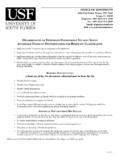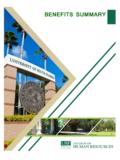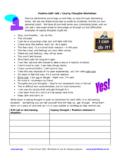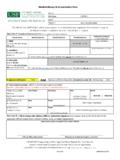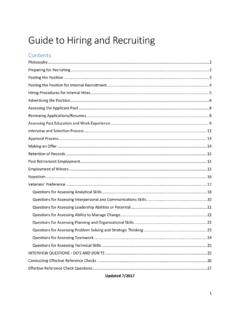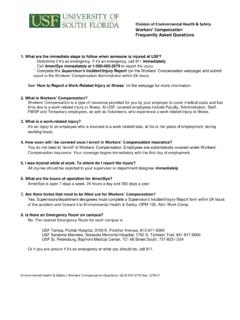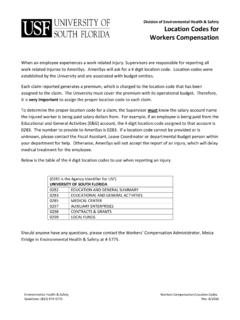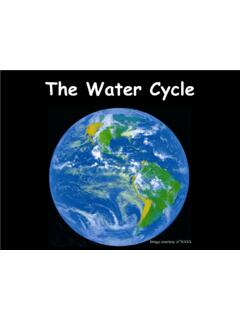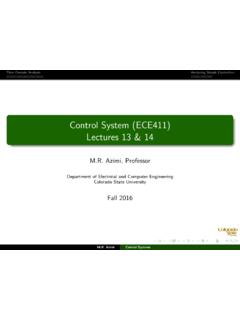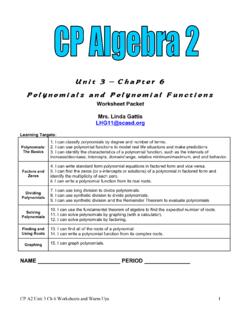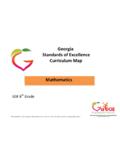Transcription of Decimal Notation in the United States
1 Decimal Notation in the United States In the United States , we use the Decimal or period ( . ) to represent the difference between whole numbers and partial numbers. We use the comma ( , ) to separate groups of three places on the whole numbers side. This might be different from the way you currently write numbers. For example, the number 1 million: Some Counties: ,00 : 1,000, It is also very important to know the names for the digit places in Decimal Notation . Here are the names in English for the United States : Trillions Hundred Billions Ten Billions Billions Hundred Millions Ten Millions Millions Hundred Thousands Ten Thousands Thousands Hundreds Tens Ones Tenths Hundredths Thousandths Ten Thousandths Hundred Thousandths Millionths 1 , 2 3 4 , 5 6 7 , 8 9 0 , 1 2 3 . 4 5 6 7 8 9 Other than the ones place, the places to the right of the Decimal are almost the same as the places to the left of the Decimal , but with an additional th added at the end.
2 How to Say Common Math Terms in English Numbers: Big Numbers: In the we separate big numbers into groups of three of the following types: Ones, Thousands, Millions, Billions, .. For example: 1,234,567 has three groups Millions: 1 Thousands: 234 Ones: 567 We say each group as a separate number, followed by the group type. So, we would say: One million, two hundred and thirty-four thousand, five hundred and sixty-seven Decimals: When there is a Decimal , we say it a few different ways: can be expressed as four tenths, zero point four, or just point four As the number gets bigger, we tend to just say the numbers is best expressed as point four five three five If there is a whole number, we say the whole number first, and, and then the Decimal 4, is Four thousand, five hundred and thirty-two, and sixty-eight hundredths or Four thousand, five hundred and thirty-two, point six eight Basic operations.
3 + add, plus, sum the sum of 1 and 2 is 3 1 plus 2 is 3 - subtract, minus, difference, fewer 5 subtract 3 is 2 5 minus 3 is 2 the difference between 3 and 5 is 2 6 fewer than 10 is 4 * multiply, times, product 5 times 6 is 30 30 is the product / divide, divisor, dividend, quotient 8 divided by 4 is 2 4 divided into 8 is 2 8 is the dividend, 4 is the divisor, 2 is the quotient Fractions: We say these by first stating the numerator and then saying the denominator as an ordinal number (with a th at the end). If the numerator is 1, then the ordinal is singular. Otherwise, it is plural. For example: is one fifth while is six fifths Short list of ordinals: 2: half or halves 3: third or thirds 4: fourth or fourths 5: fifth or fifths 6: sixth or sixths 7: seven or sevenths 8: eighth or eighths 9: nine or ninths 10: tenth or tenths 11: eleventh or elevenths 12: twelfth or twelfths 13: thirteenth or thirteenths.
4 21: twenty-first or twenty-firsts 22: twenty-second or twenty-seconds 23: twenty-third or twenty-thirds 24: twenty-fourth or twenty-fourths .. 100: hundredth or hundredths 1000: thousandth or thousandths As the denominator gets bigger, we are more likely to say the numerator over the denominator For example: is best expressed as either four over seven four five two eight three or four over seven hundred and forty-five thousand, two hundred and eighty-three Exponents: When we have x^2 or x2, we say x to the power of 2 or x to the second power We call x the base and 2 the exponent Special exponent names: x2 is called x squared x3 is called x cubed We say roots in a similar way is the square root of 4 or the second root of 4 is the cubed root of 8 or the third root of 8 is the fifth root of 32 When the result of a square root is an integer, we call it a perfect square.
5 For example, these are perfect squares: 4, 9, 16, 25, 36, 49, United States Customary Units of Measurement Length: Unit: Other Unit: Metric Equivalent (approximate): 1 inch (in) centimeters 1 foot (ft) 12 inches meters 1 yard (yd) 3 feet meters 1 mile (mi) 5,280 feet kilometers Liquid Volume: Unit: Other Unit: Metric Equivalent (approximate): 1 teaspoon (tsp) mL 1 tablespoon (Tbsp) 3 teaspoons 1 fluid ounce (fl oz) 2 tablespoons mL 1 cup (cp) 8 fluid ounces mL 1 pint (pt) 2 cups mL 1 quart (qt) 2 pints L 1 gallon (gal) 4 quarts L Mass/Weight: Unit: Other Unit: Metric Equivalent (approximate): 1 ounce (oz) grams 1 pound (lb) 16 ounces grams 1 ton 2,000 pounds kilograms Temperature: Degrees Fahrenheit Water Freezing Point: 32 degrees F Water Boiling Point: 212 degrees F Conversion: or

